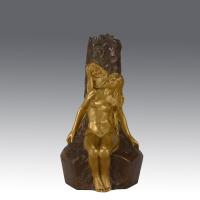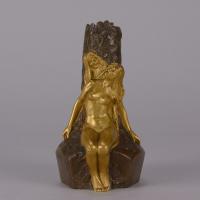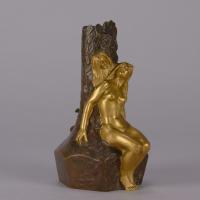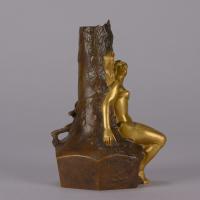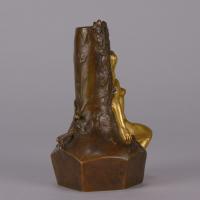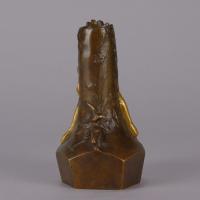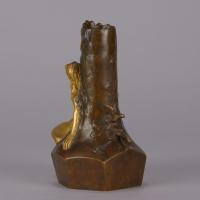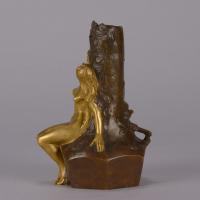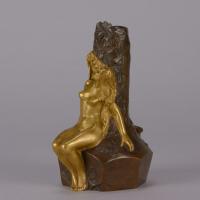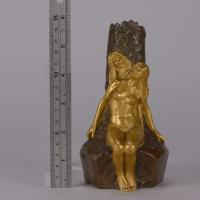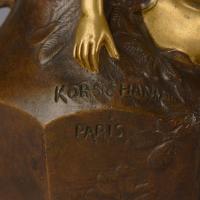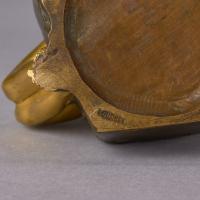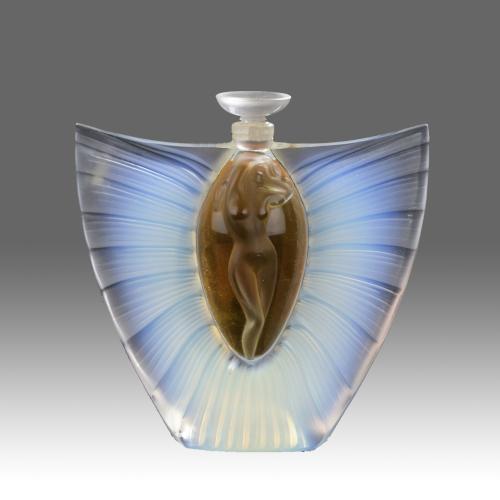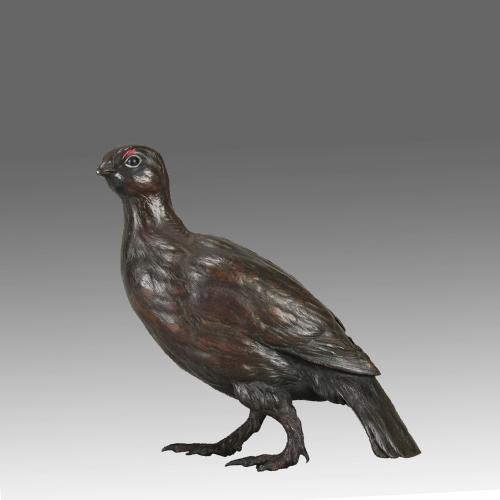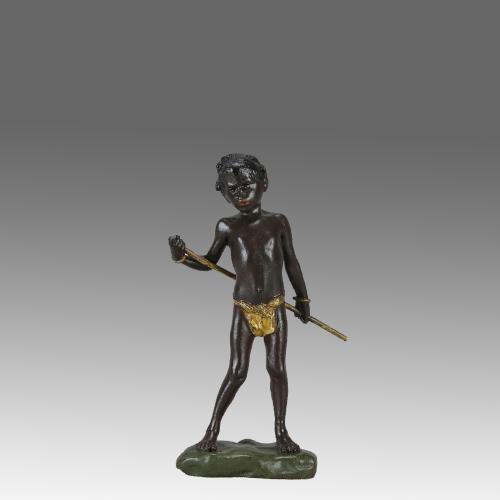
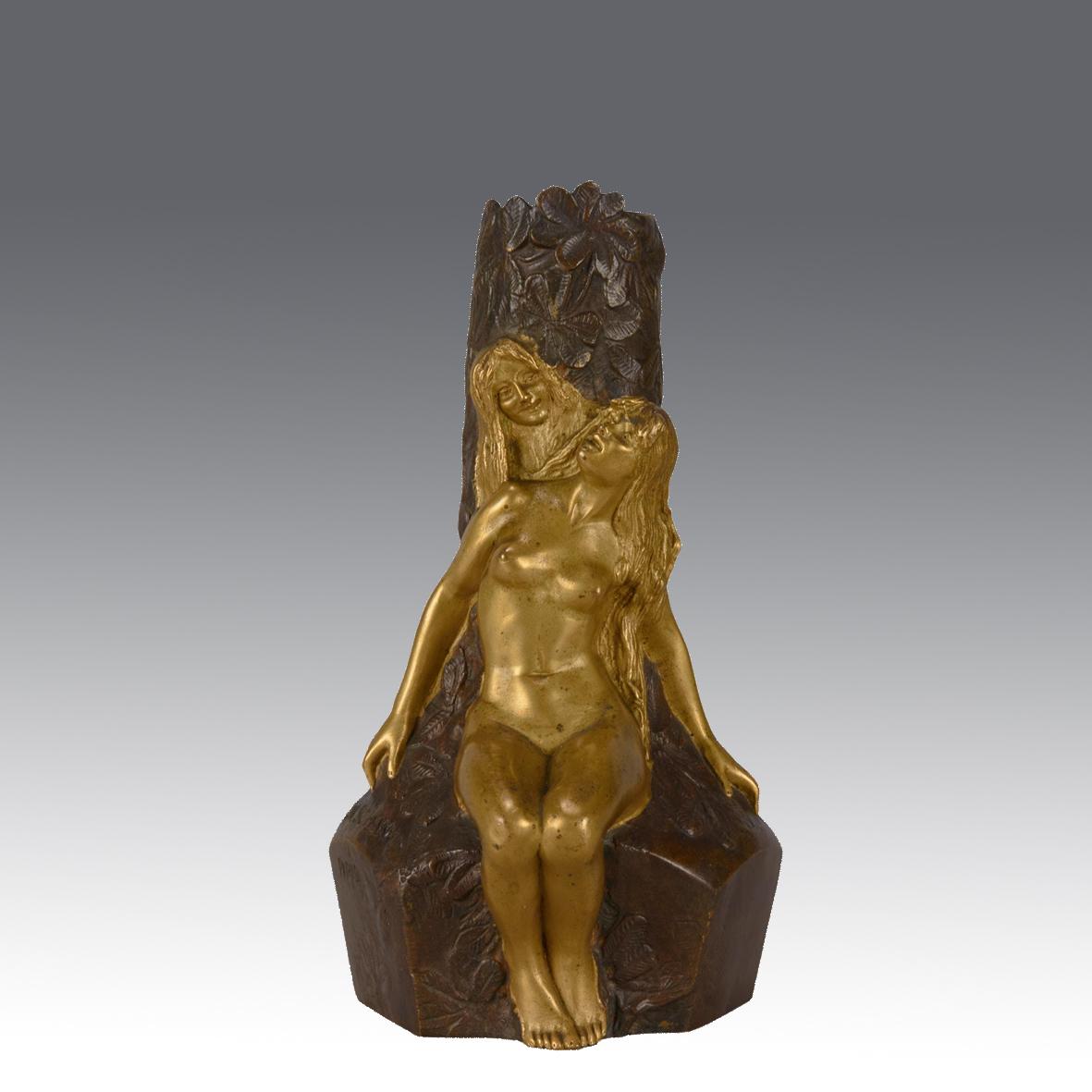
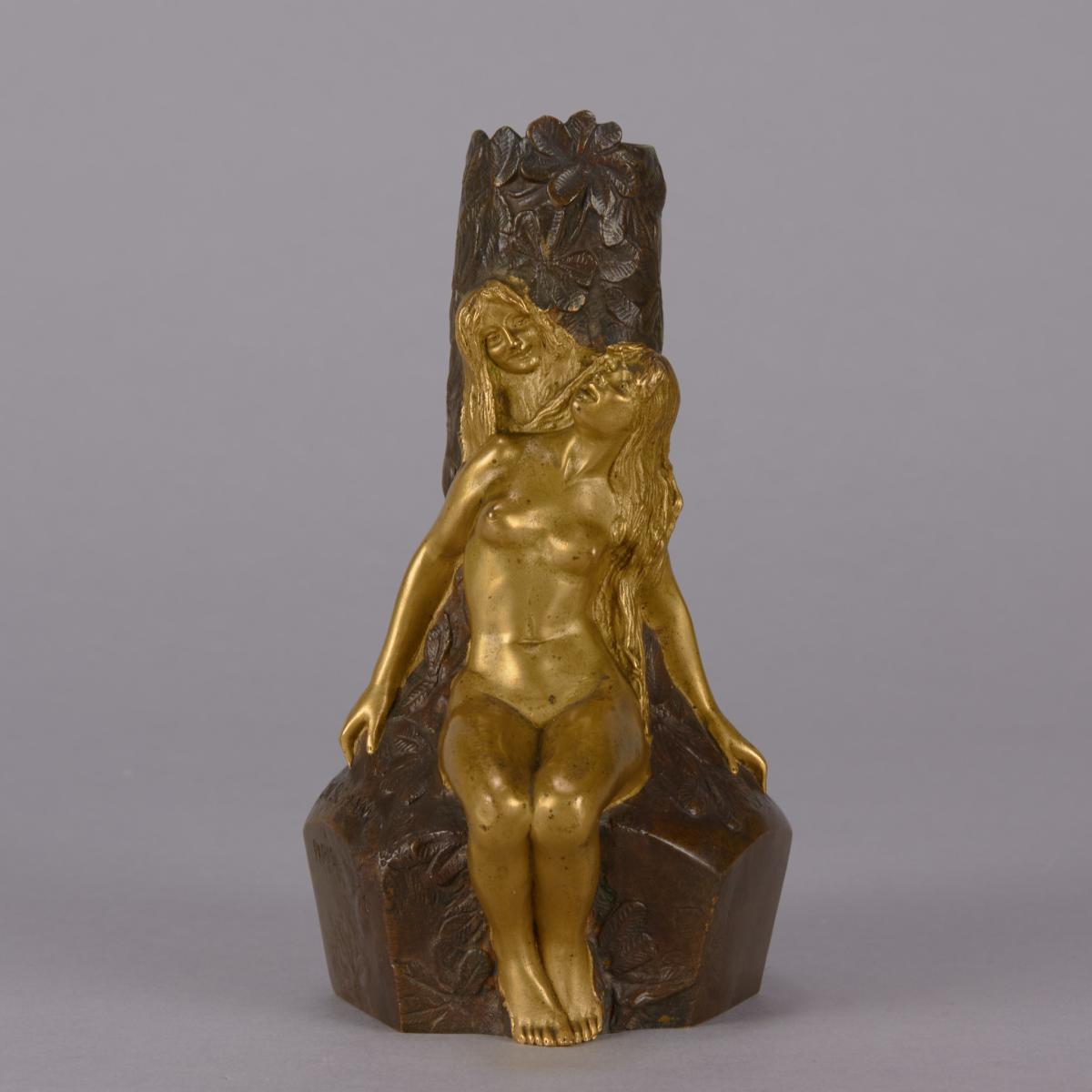
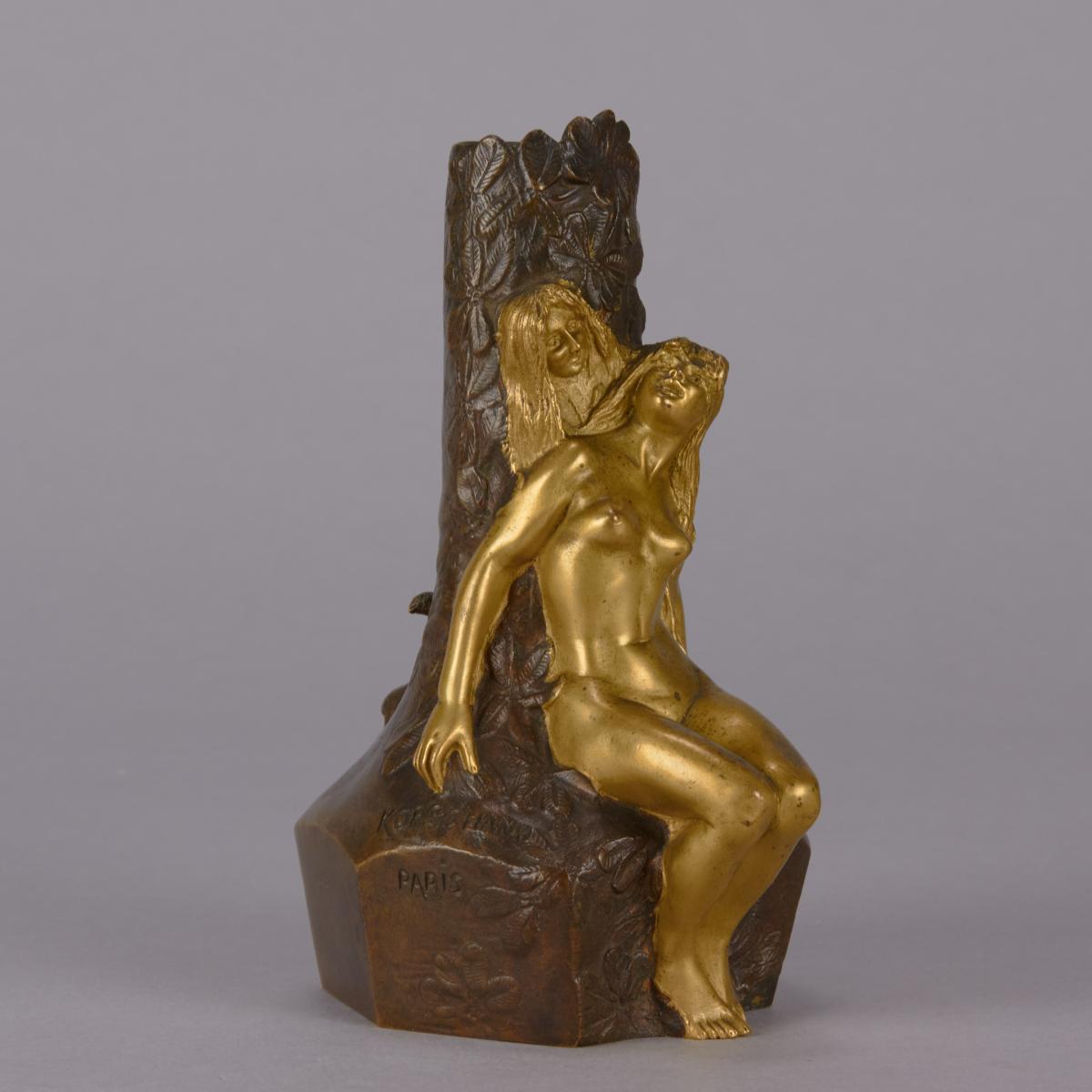
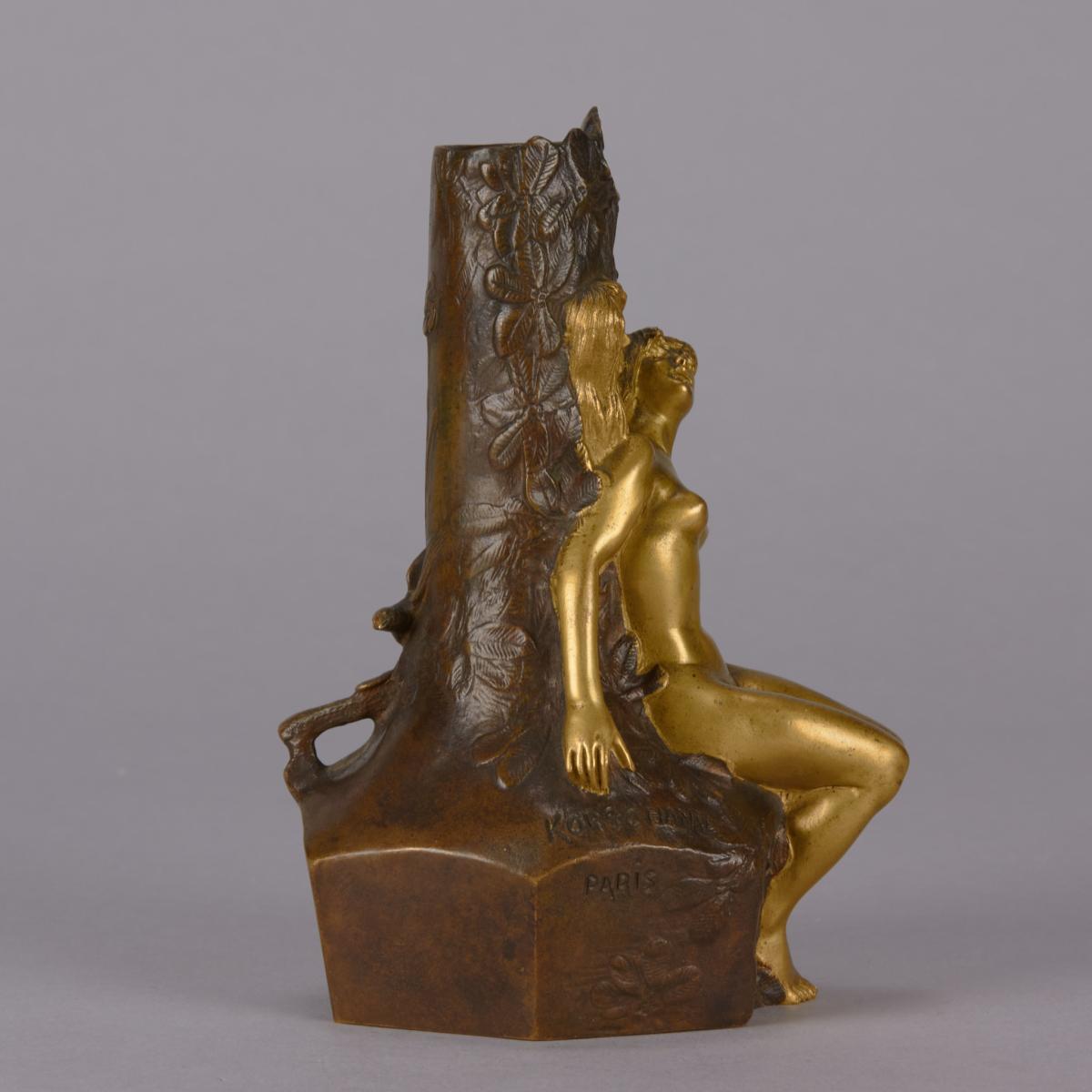
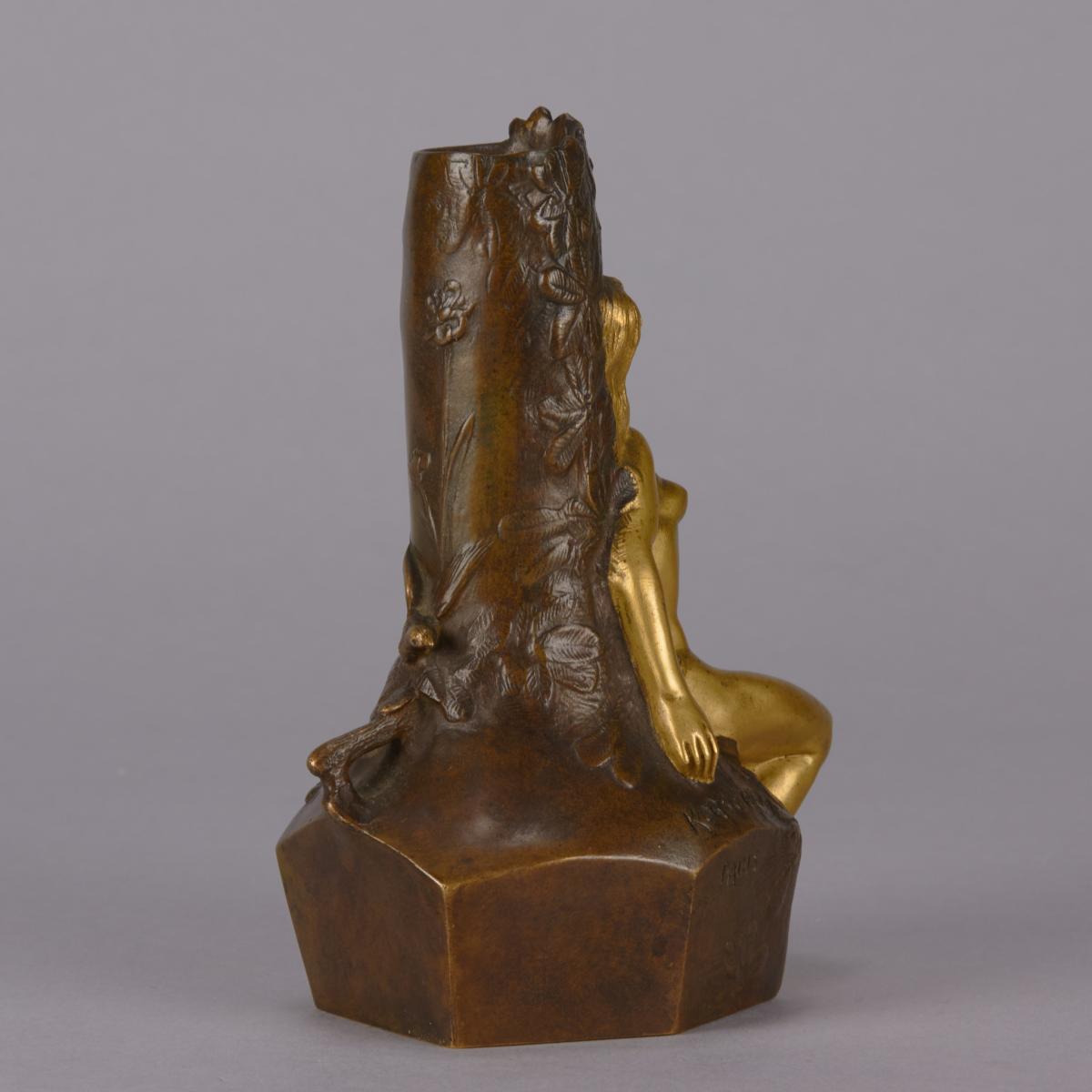
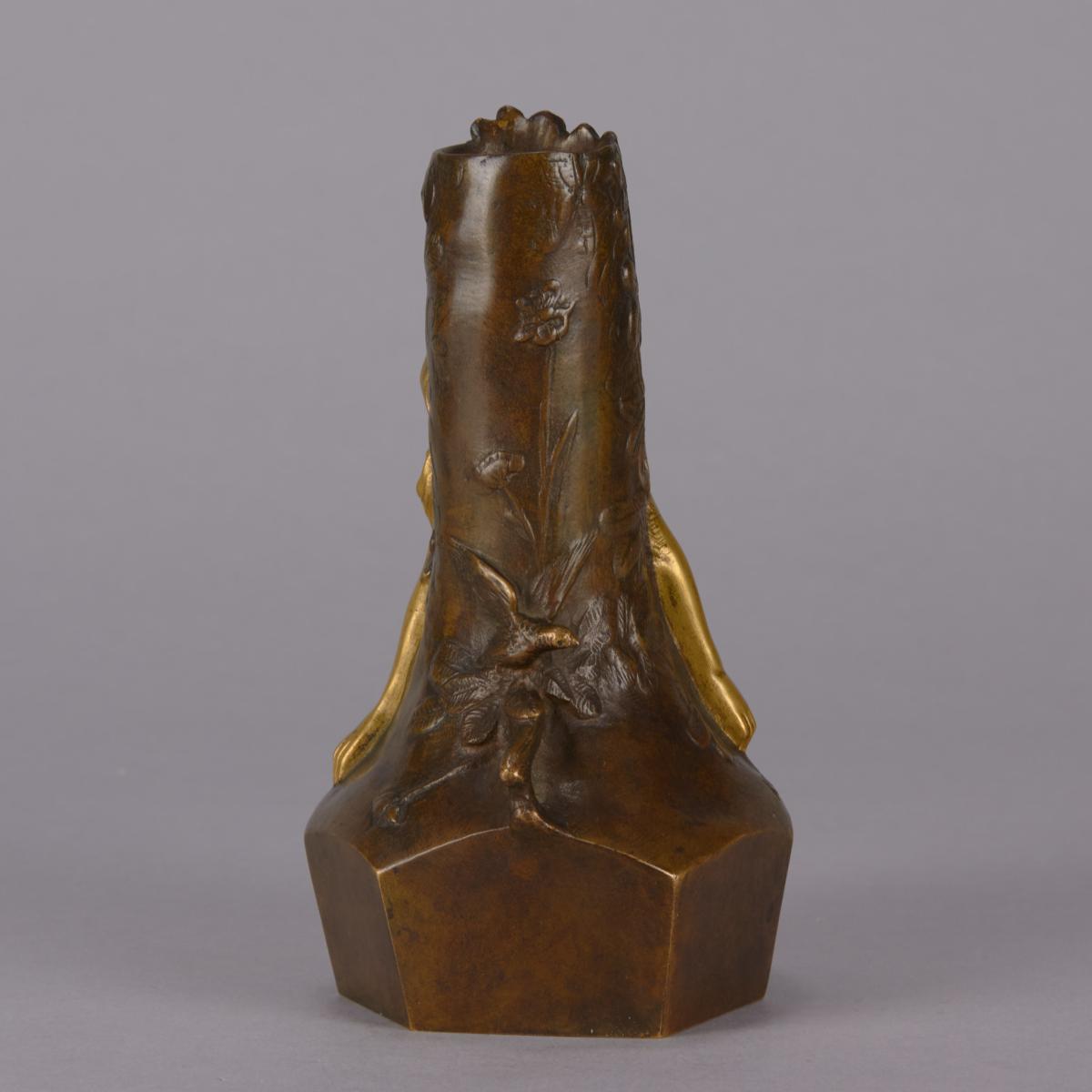
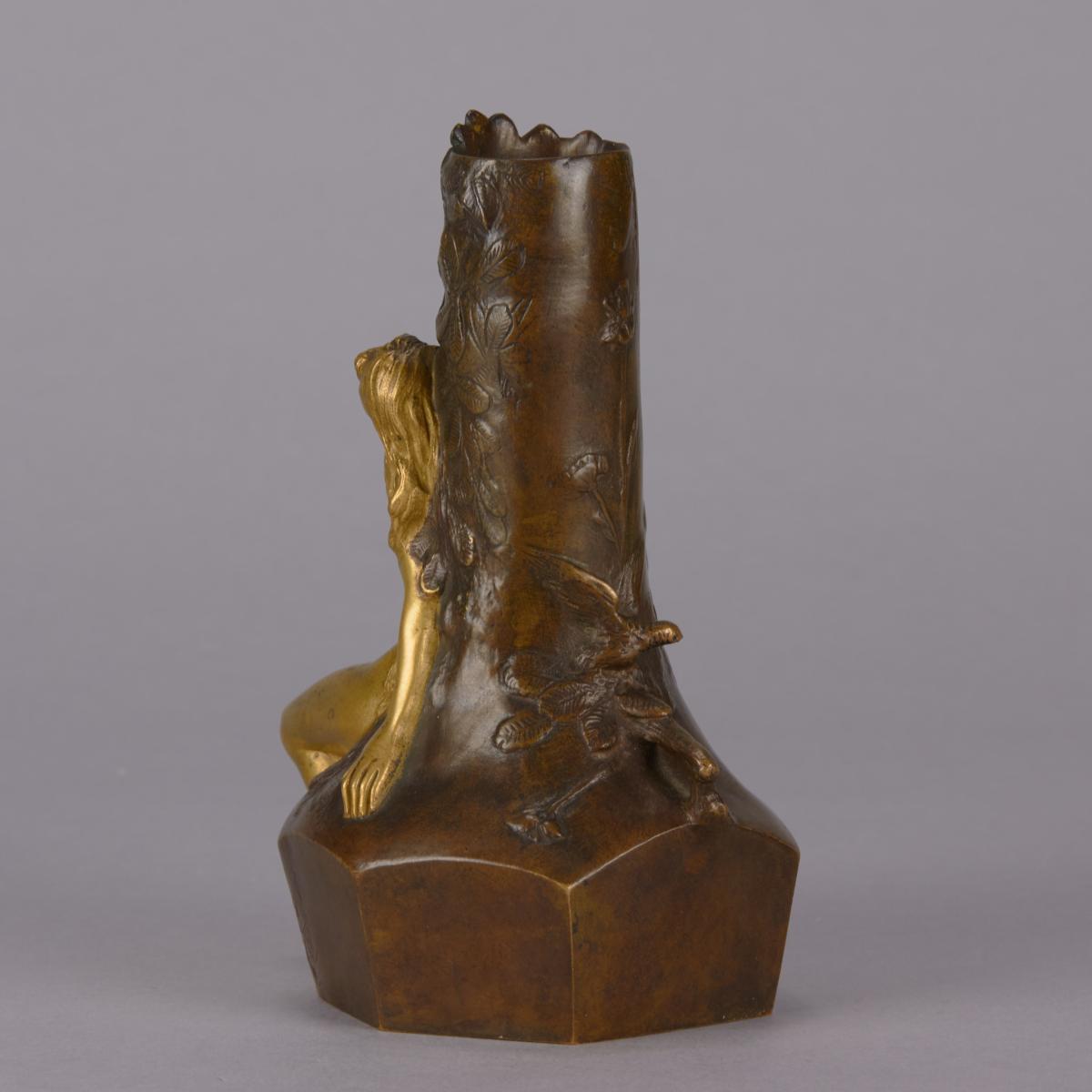
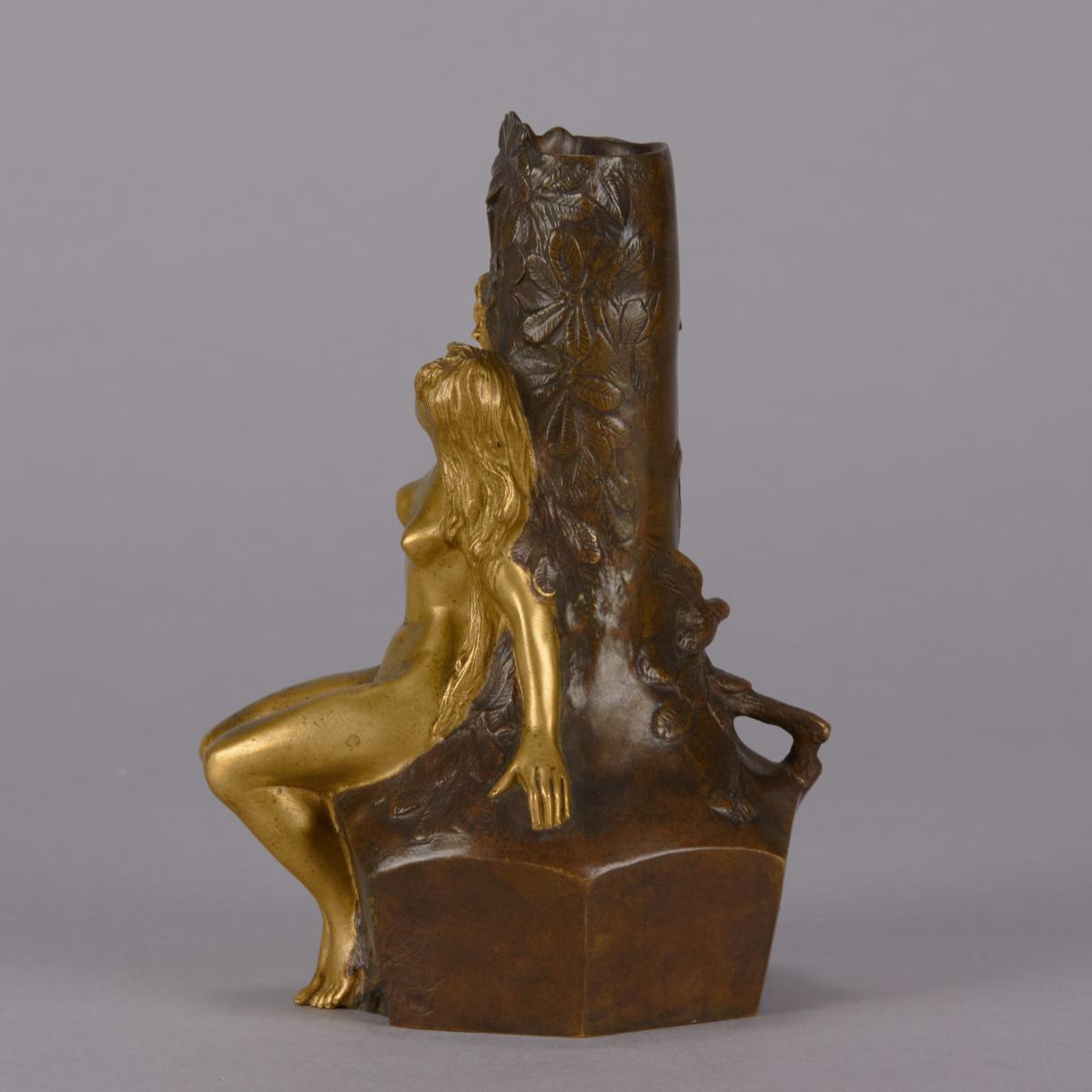
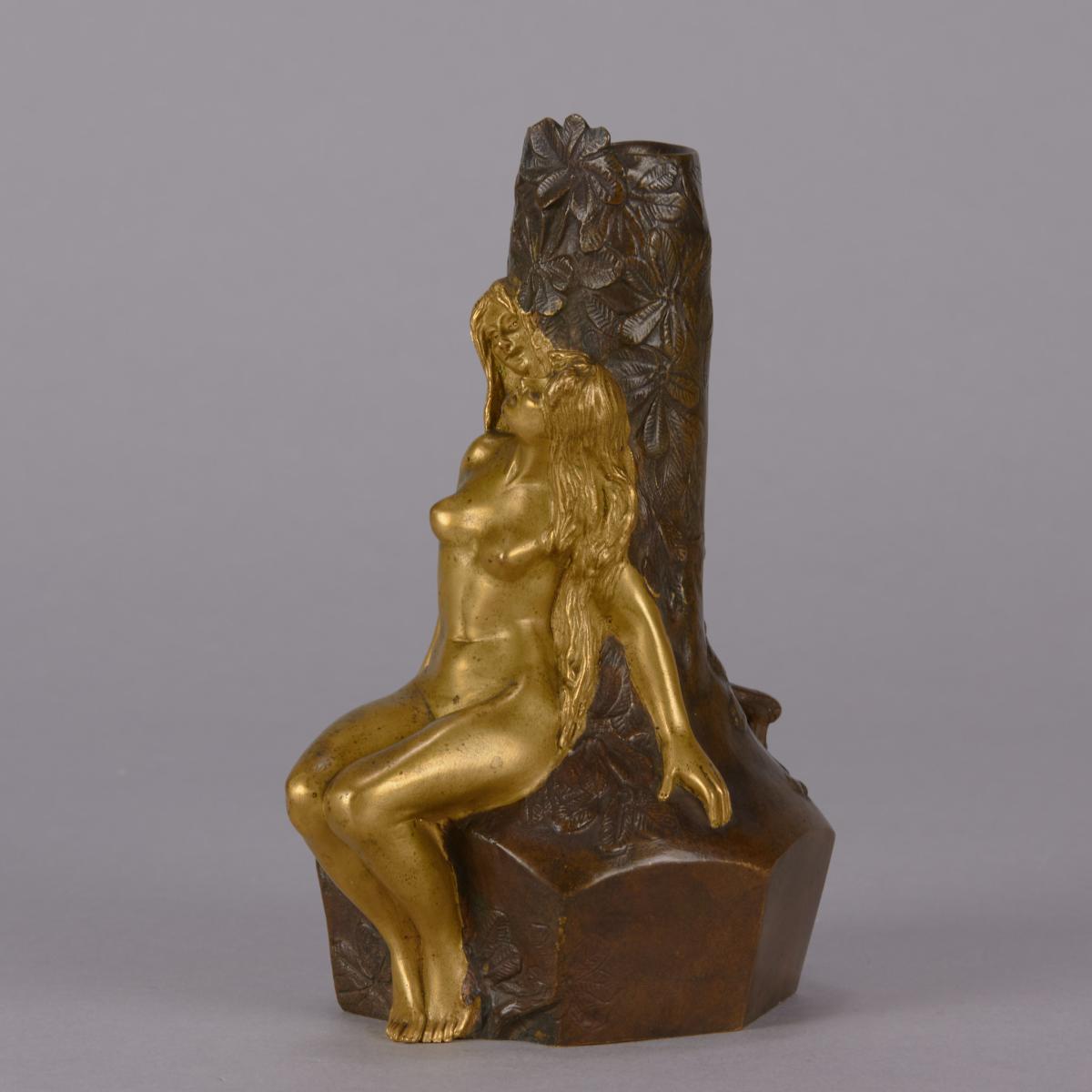
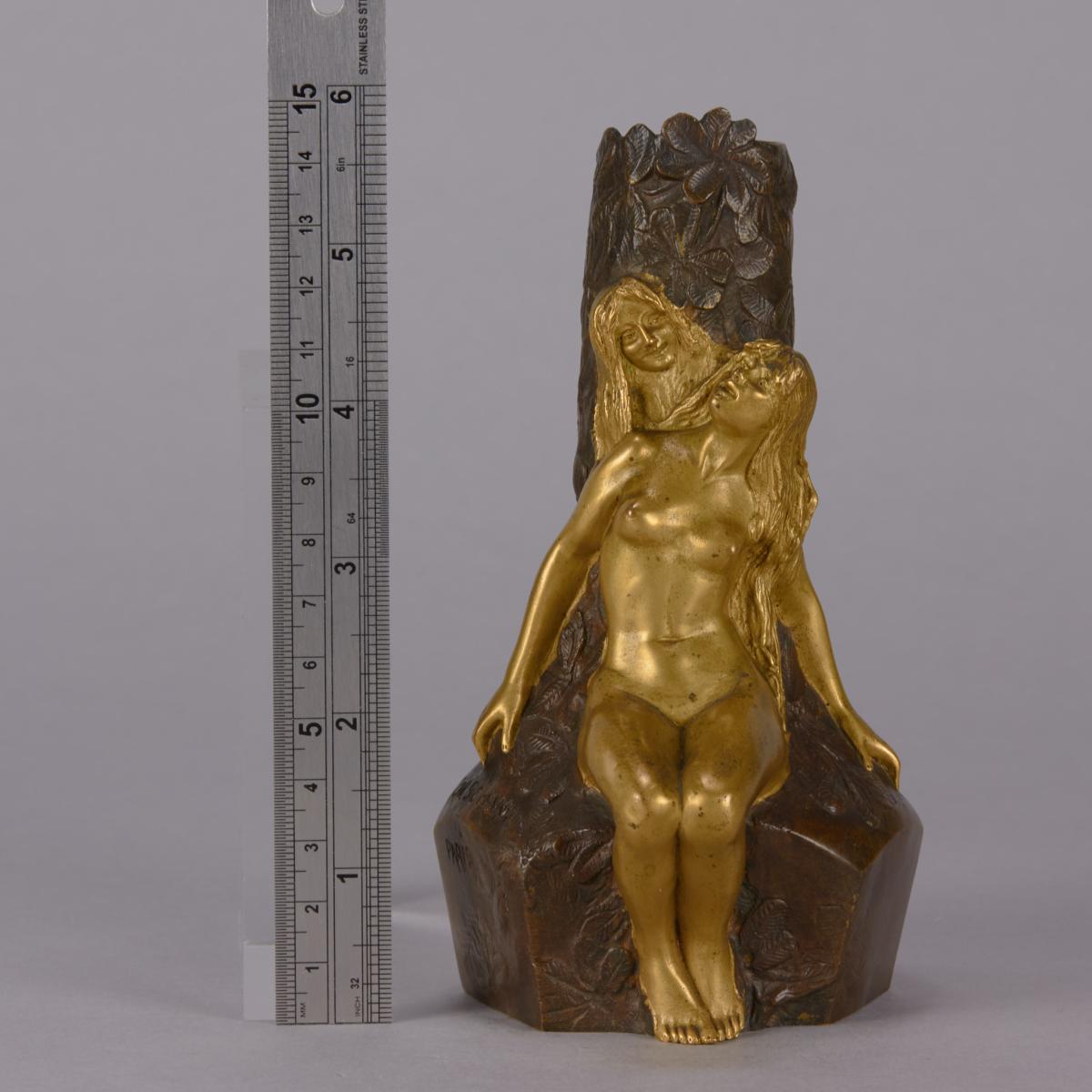
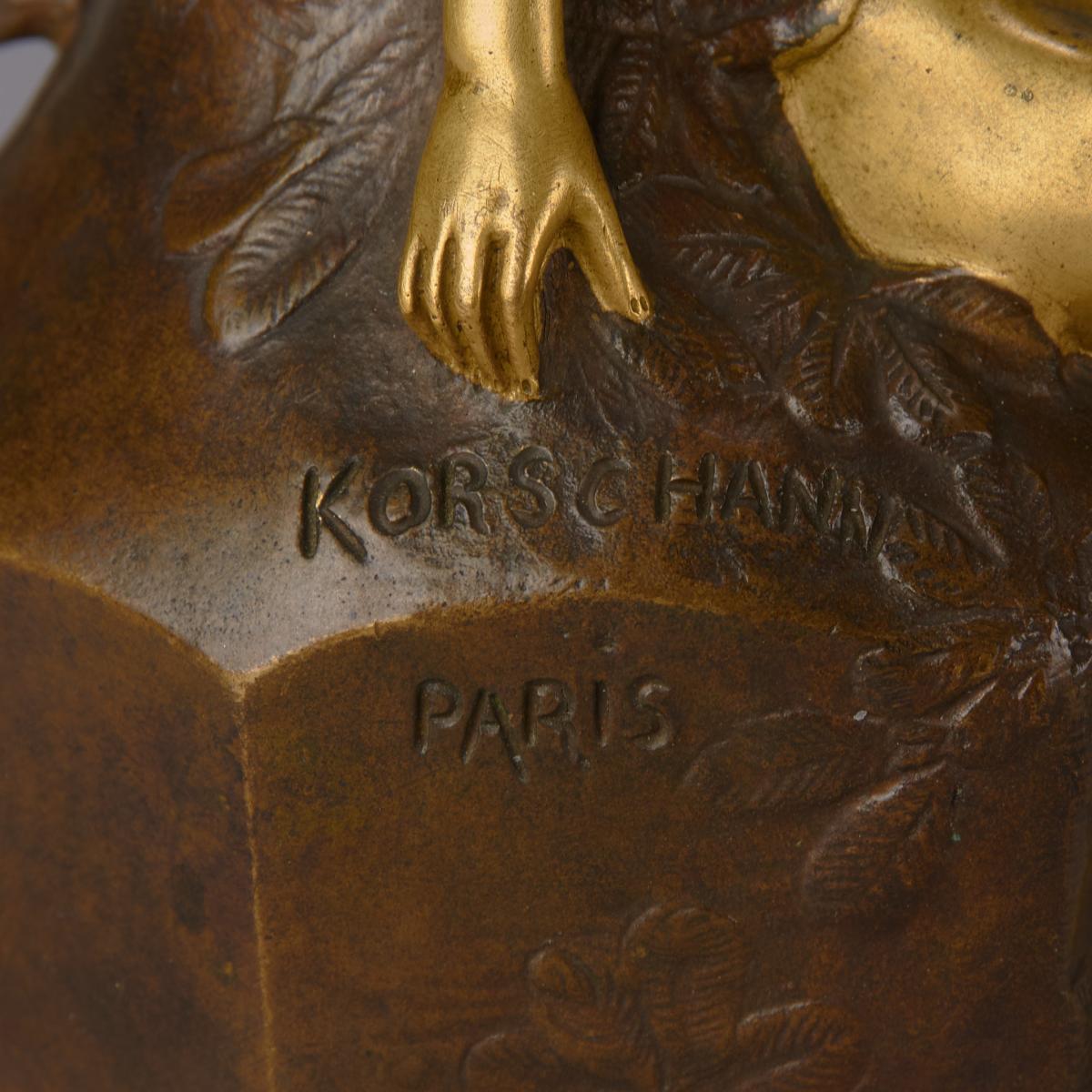
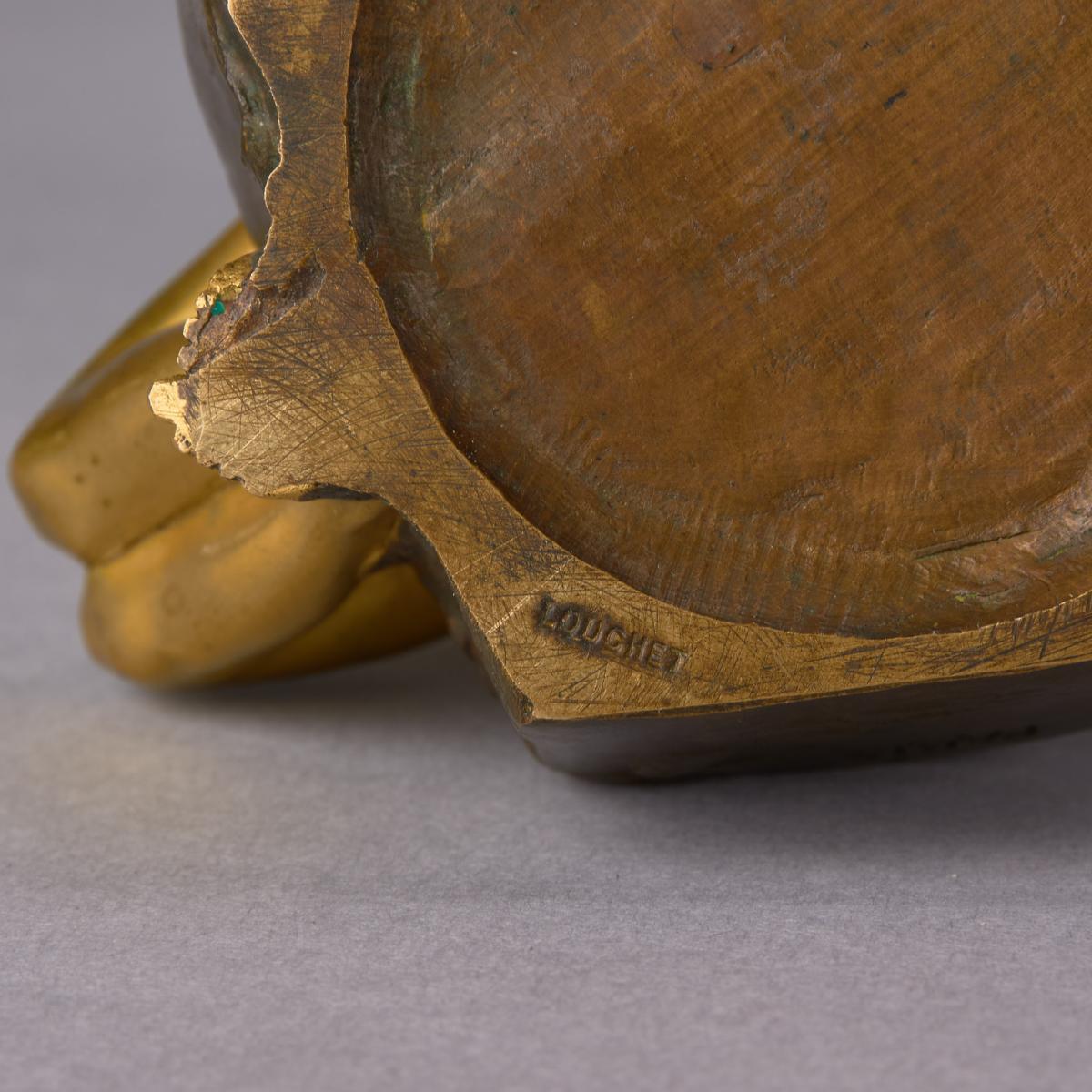
Price
£1650.00This object is eligible for a Certificate of BADA Provenance
The BADA Standard
- Since 1918, BADA has been the leading association for the antiques and fine art trade
- Members are elected for their knowledge, integrity and quality of stock
- Our clients are protected by BADA’s code of conduct
- Our dealers’ membership is reviewed and renewed annually
- Bada.org is a non-profit site: clients deal directly with members and they pay no hidden fees
A very beautiful late 19th Century French Art Nouveau bronze vase decorated with two gilt bronze female figures sitting upon a tree stump. The surface of the vase with excellent detail and very fine colour, signed Korschann and with foundry mark for Louchet Paris.
ADDITIONAL INFORMATION
Height: 15 cm.
Condition: Excellent Original Condition.
Circa: 1900.
Materials: Bronze.
Foundry: Louchet Paris.
SKU: 8409.
ABOUT
Charles Korschann Biography
Charles Korschann (1872-1943). Born in Brno in Moravia, he attended the Fine Arts Academies in Vienna and Berlin. Although he frequently returned to Moravia, then part of the Austro-Hungarian Empire but a constituent part of Czecho-Slovakia after the First World War, he spent most of his life after 1894 in Paris. He designed many small mostly Art Nouveau subjects including vases, inkwells, clocks, lamps, wall sconces, and jardinières among those with some utility, often with full figures of elegant women, nearly always with hieratic expressions or Symbolist poses. He exhibited at the Salons of the Société des Artistes Français from 1894 to 1905, and was awarded a Bronze Medal at the 1900 Exposition Universelle. He worked with gilt and patinated bronze, bronze with polychrome glazed and unglazed ceramics, and pewter, most cast and edited by Louchet. He executed a bust of Alphonse Mucha for the museum in Brno.
Art Nouveau
The Art Nouveau style of sculpture began as a French phenomenon, a demonstration of wealth looking for the latest ways to furnish homes. The Art Nouveau style was exploring themes such as nature, symbolism and the adoration of the female form. Art Nouveau sculptors broke away from the classical forms of sculpture that had been taught at the Ecole des Beaux Arts in Paris and started to create sensuous figures and busts of naked or semi-clad maidens entwined with flowers and dancing with lucid eroticism.
Art Nouveau was a movement that swept through the decorative arts and architecture in the late 19th and early 20th centuries. Generating enthusiasts throughout Europe and beyond, the movement issued in a wide variety of styles, and, consequently, it is known by various names, such as the Glasgow Style, or, in the German-speaking world, Jugendstil. Art Nouveau was aimed at modernizing design, seeking to escape the eclectic historical styles that had previously been popular. Artists drew inspiration from both organic and geometric forms, evolving elegant designs that united flowing, natural forms with more angular contours. The movement was committed to abolishing the traditional hierarchy of the arts, which viewed so-called liberal arts, such as painting and sculpture, as superior to craft-based decorative arts, and ultimately it had far more influence on the latter. The style went out of fashion after it gave way to Art Deco in the 1920s, but it experienced a popular revival in the 1960s, and it is now seen as an important predecessor of Modernism.
The desire to abandon the historical styles of the 19th century was an important impetus behind Art Nouveau and one that establishes the movement’s modernism. Industrial production was, at that point, widespread, and yet the decorative arts were increasingly dominated by poorly made objects imitating earlier periods. The practitioners of Art Nouveau sought to revive good workmanship, raise the status of craft, and produce genuinely modern design.
Stock number
8409The BADA Standard
- Since 1918, BADA has been the leading association for the antiques and fine art trade
- Members are elected for their knowledge, integrity and quality of stock
- Our clients are protected by BADA’s code of conduct
- Our dealers’ membership is reviewed and renewed annually
- Bada.org is a non-profit site: clients deal directly with members and they pay no hidden fees


